
Last week, I mentioned that I was on a family holiday with the in-laws, frolicking among fluffy sheep on the fields of England. Here are some nice pictures of us with baby animals and baby humans:
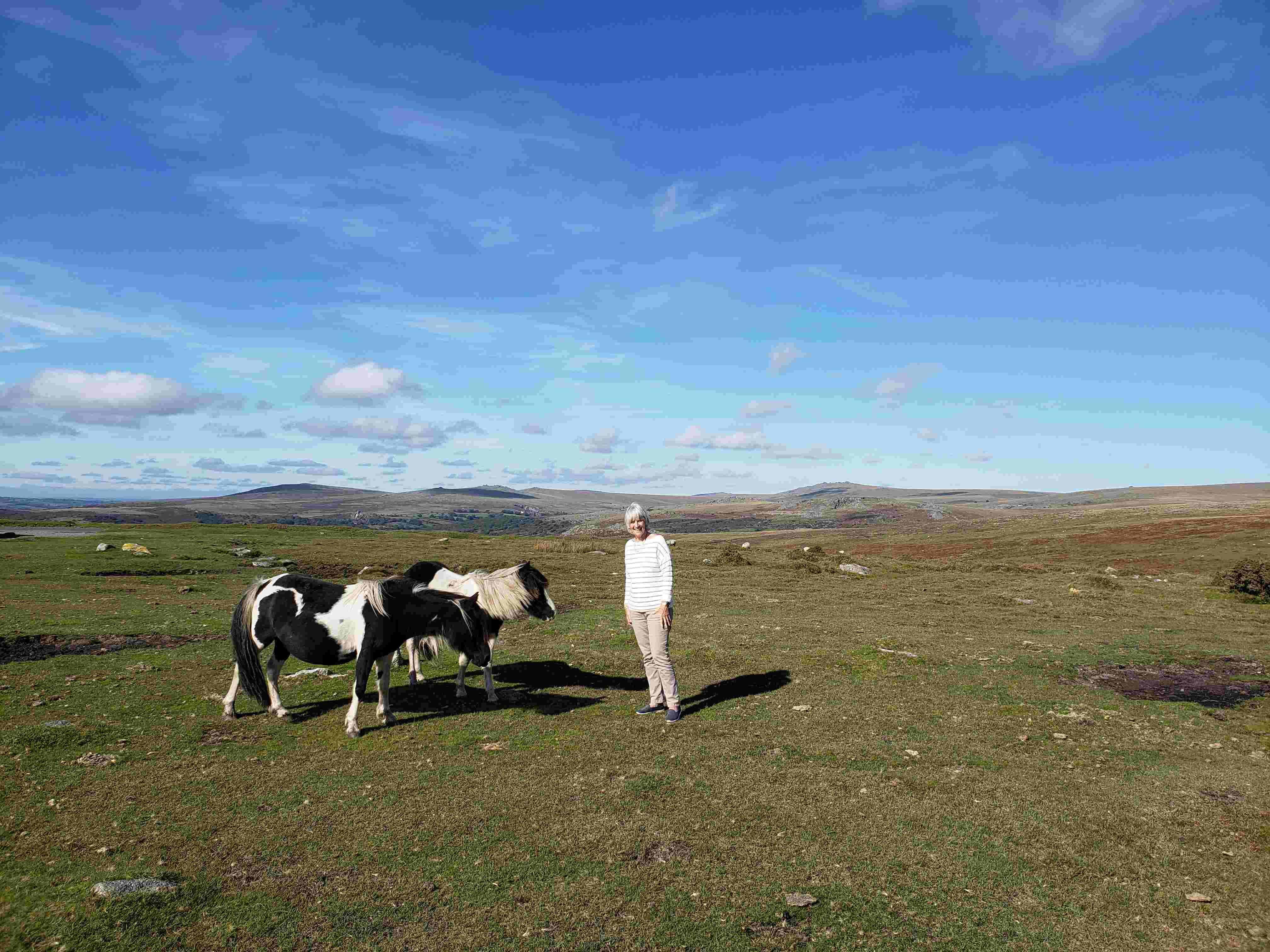
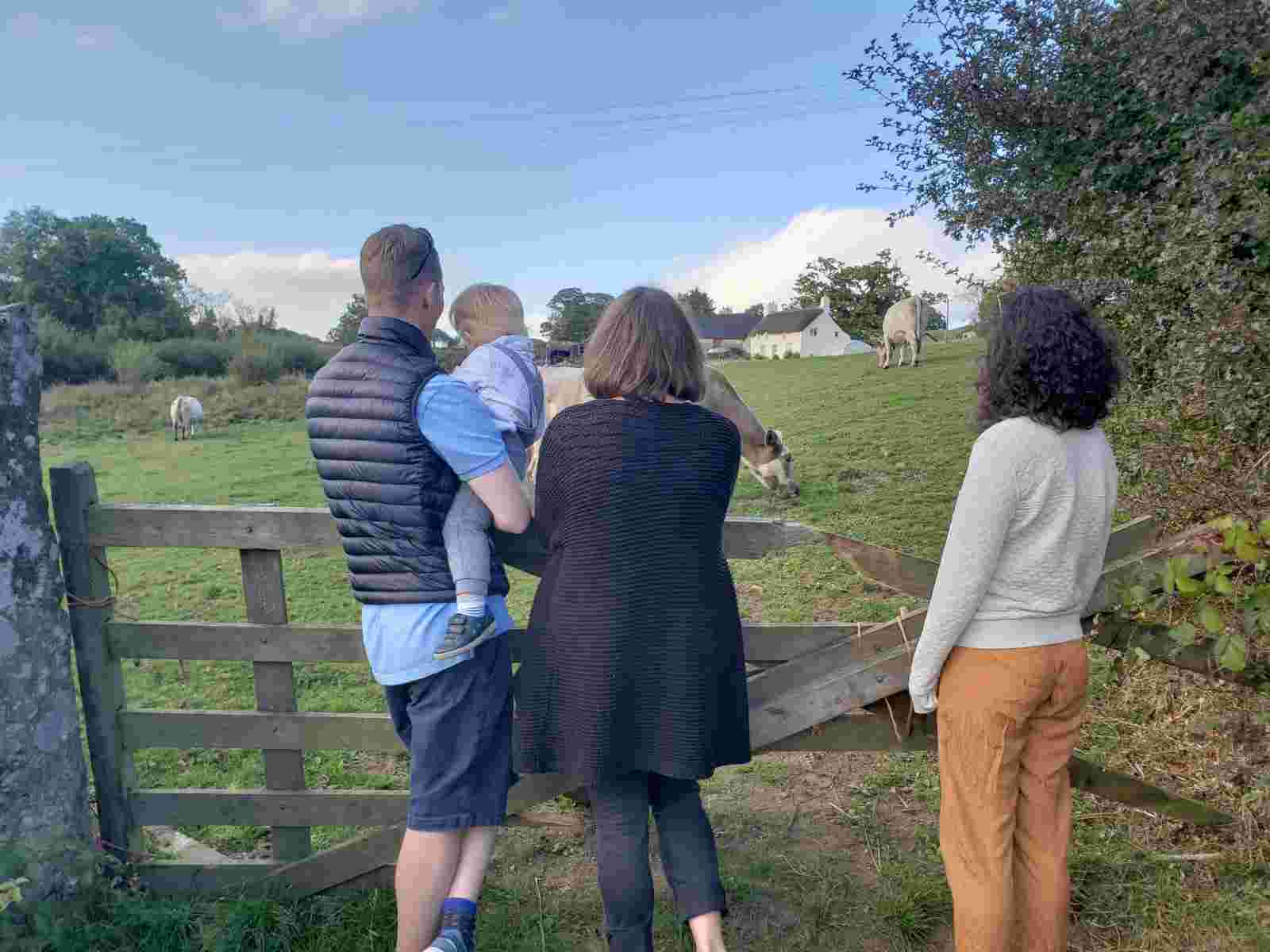
The other thing that happened was that we went to the Dartmoor Diner in Plymouth, a cozy, quaint little restaurant by the side of the road that leads into Dartmoor National Park, a windswept expanse of rolling hills, heather, and grazing farm animals. The Dartmoor Diner is amazing. It has big windows overlooking the moors, wooden tables and chairs, and, like all diners worth their muster, a counter full of desserts as big as your head by the entrance. Their desserts are no joke, and if anything are even bigger, more decadent versions of classic dinner sweet fare. As we walked past, I ogled a sky-high lemon meringue tart, a dark, thick wedge of fudgy chocolate cake, and a Maltesers pavlova brimming with candy, chocolate, and caramel. As good as the desserts looked, however, nobody even managed to get one, as we were stuffed after our meal. The Dartmoor Diner food is hearty, filling, comfort British food – full of casseroles, pies, and roast meats. Being near the ocean, there was also a substantial seafood section with fish cakes and fried shrimp.
I went for the classic fish and chips. There are foods that I absolutely must get when in certain countries, and fish and chips in Britain is one such example. This past trip, I had fish and chips twice! Now – you are thinking – the title and the pictures of this post are for moussaka. Why is this crazy lady babbling on about fish and chips?! Well, the answer is that while I was very happy with my meal, and very delicious and fresh that it was, I nevertheless suffer hopelessly from food envy, and my mother-in-law’s moussaka was singing a siren song. As good as fresh fried fish is, it is nevertheless not an ooey, gooey meat casserole. There is something endlessly comforting about a casserole in any form, with its bubbling, oozing cheese and its layers of hot, steaming, multifaceted goodness, its browned top crust and squishy interiors. It may sound crazy, but the way that my mind works is that I could not stop thinking about that moussaka! And so, as soon as I got home, as soon as I could, I made one all for myself.
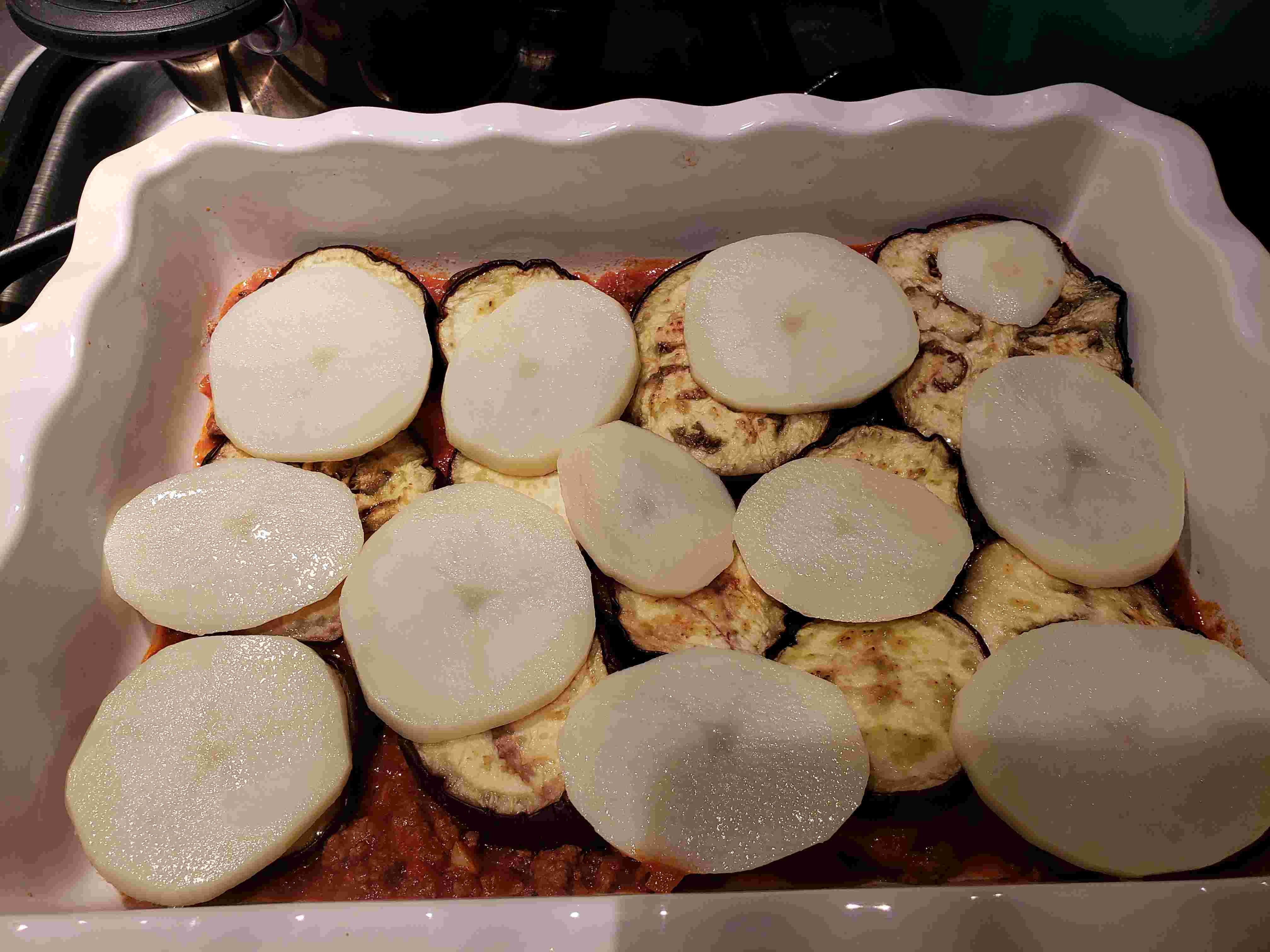
Moussaka is fairly labor intensive, and requires a lot of prep and simmering. I would definitely save it for a lazy Sunday! But you can also make an incredible amount of it to eat through the week. In all my obsession about moussaka, I might have gone overboard – I made enough for four (FOUR!) meals for both James and me, and we ate it for dinner straight through from Monday to Thursday. I may have gotten my moussaka fix for the next six months. Anyway, I’m not sure that this moussaka is the most authentic, but it is a flavorful, comforting, warm blend of meat, spices, eggplant, and potato that comes out of the oven with bubbling juices and crisp, cheesy edges.
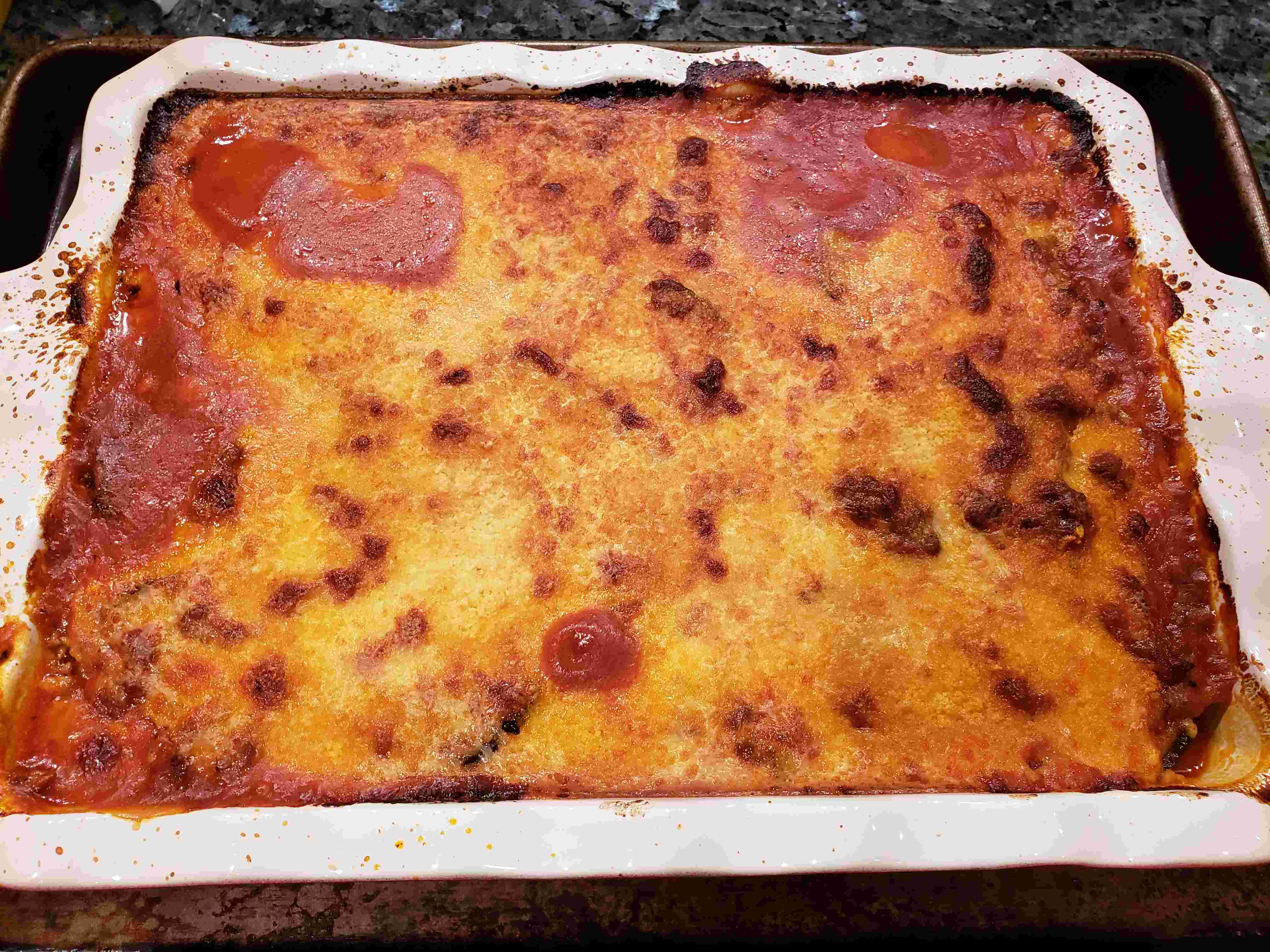
Some Notes:
- Eggplant skin on or off? I don’t mind the skin, and I like the texture in moussaka, as it provides some chew against the mushiness of the rest of the dish. However, some find that the skin can make the moussaka too bitter. It’s really a matter of preference whether you peel the eggplant or not; you can also peel off some skin and leave some on for compromise.
- I used lamb, but if you don’t like the flavor, you could use a mix of lamb and beef, or even all beef.
- I don’t know if potato is traditionally used, but I like it; feel free to skip the potato if you prefer.
- I added zucchini because the Dartmoor Diner version did; I think this addition is rather frivolous and not authentic at all; feel free to skip it.
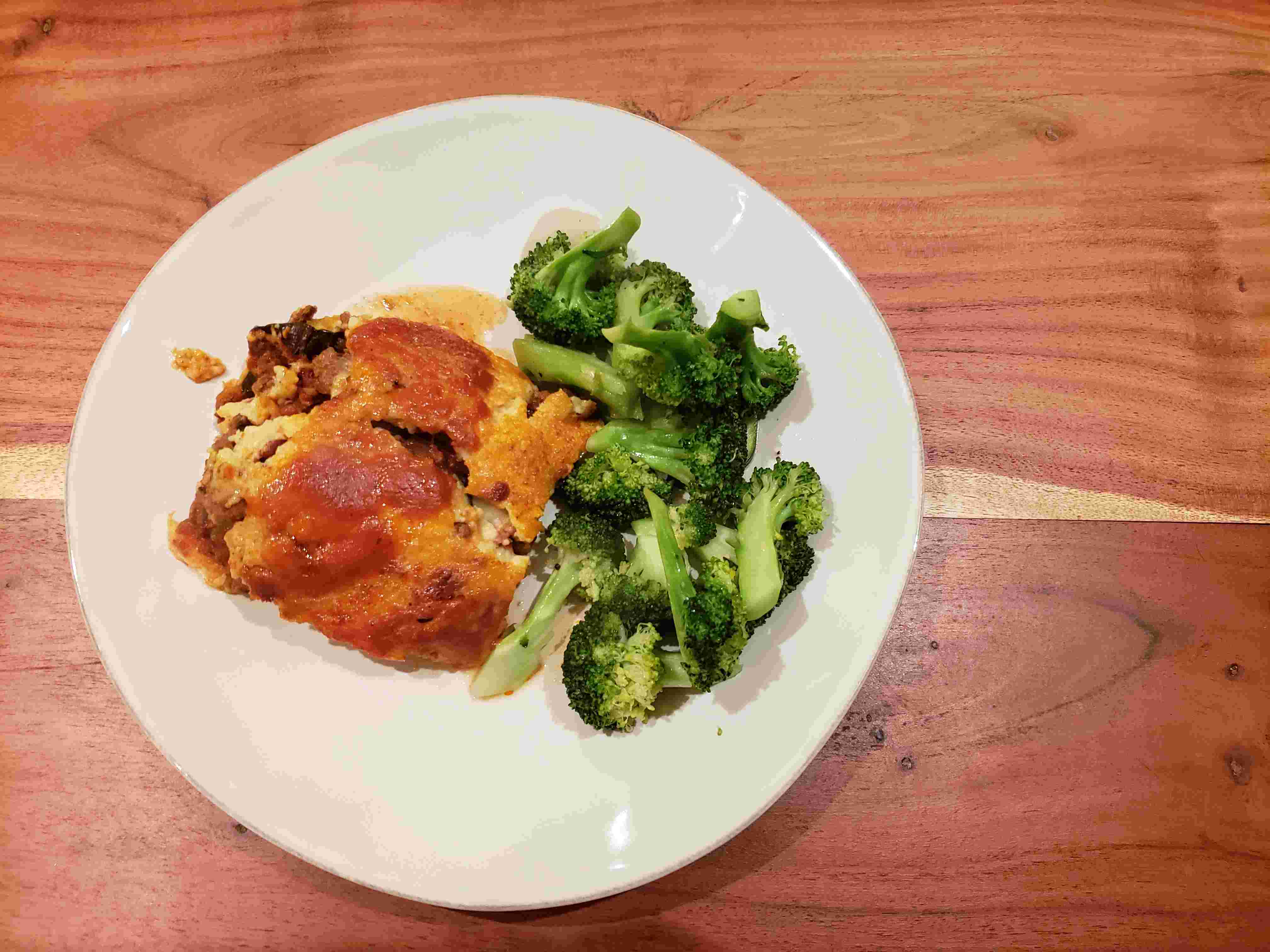
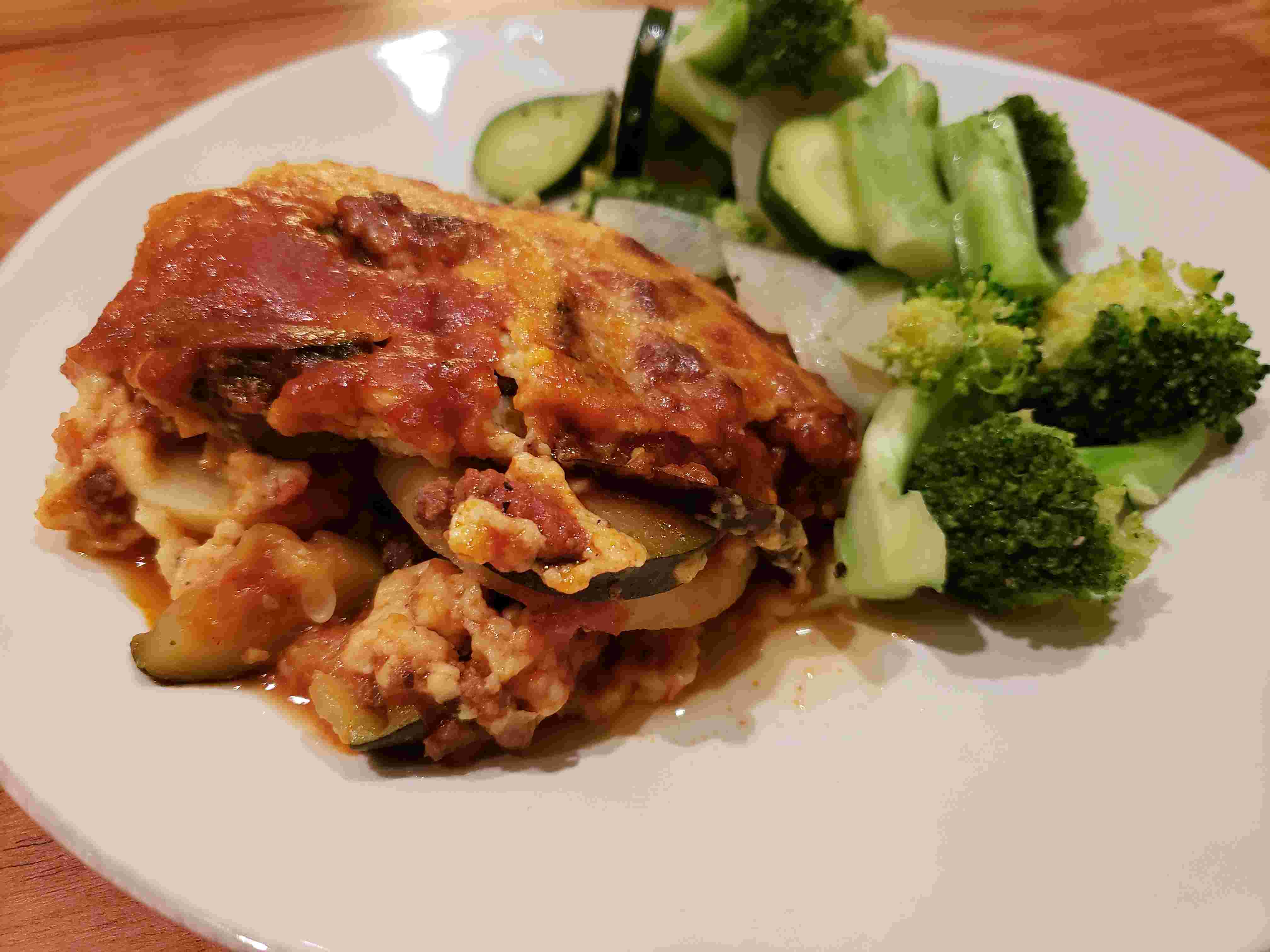
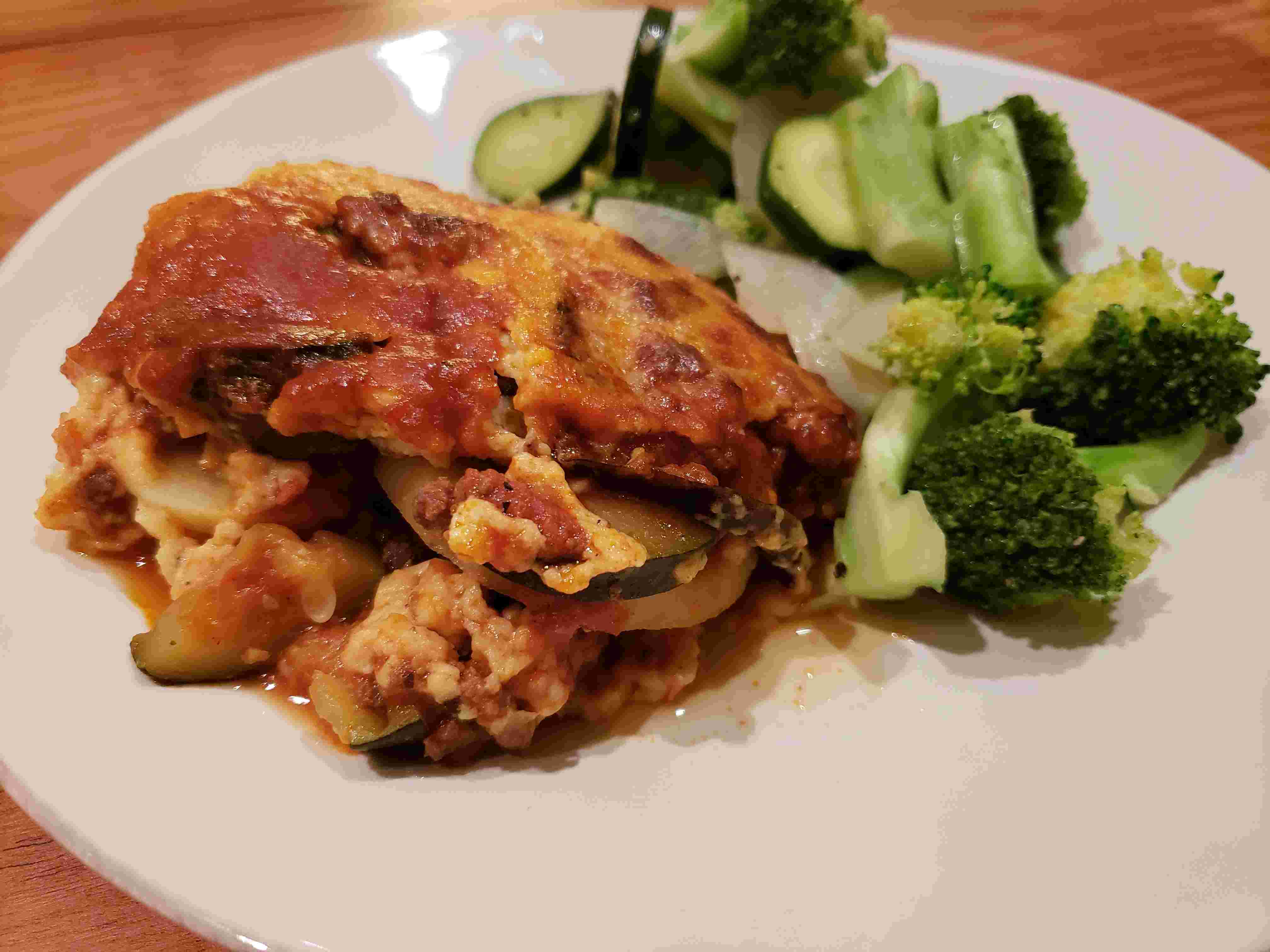
Moussaka
Source: Bobby Flay and BBC Food
Ingredients
Meat Sauce:
- 1/4 cup extra-virgin olive oil, divided
- 1 pound ground lamb
- 1/2 teaspoon ground cinnamon
- 1 teaspoon ginger, finely minced
- 1/4 teaspoon ground allspice
- 1/2 teaspoon cayenne
- 1/2 teaspoon ground cumin
- Kosher salt and freshly ground black pepper
- 1 large yellow onion, diced
- 1 zucchini, thinly sliced and quartered (optional)
- 5 cloves garlic, finely chopped
- 2 tablespoons tomato paste
- 1 cup red wine
- 1 (28-ounce) can chopped or pureed tomatoes
- 1 teaspoon dried oregano
- 2 bay leaves
Bechamel Sauce:
- 6 tablespoons unsalted butter
- 1/2 cup flour
- 2 1/2 cups milk
- 1 bay leaf
- Kosher salt and freshly ground black pepper
- 1/4 teaspoon ground nutmeg
- 3 egg yolks
- 1 lemon, zested
The Rest of the Moussaka:
- 2 pounds eggplant (about 2 medium globe eggplants)
- Extra-virgin olive oil
- 1 pound Yukon gold or Russet potatoes, peeled and thinly sliced (1/8-inch to 1/4-inch thick)
- 1 cup grated Romano cheese
Instructions
For the meat sauce:
-
Heat 1 tablespoon of olive oil in a large saucepan (at least 5 quarts) over medium-high heat. Add lamb, cinnamon, ginger, allspice, cayenne, cumin, and salt and black pepper. Cook, stirring to break up the meat, until browned, about 5 minutes. It's ok if the meat is still slightly pink inside; you just want to brown the outside for now. Transfer lamb to a strainer and drain the juices; also discard any liquid left in the pan. Return the pan to the heat, add remaining 3 tablespoons olive oil, and heat until it begins to shimmer. Add onions and zucchini, season with lots of salt and black pepper, and cook until soft, about 5 minutes. Add the garlic and cook for 1 minute. Add the tomato paste and cook for 1 minute.
-
Return the lamb to the pan, add the wine, and cook, stirring occasionally, until wine is almost completely evaporated, about 5 minutes. Add the tomatoes, oregano, and bay leaves, and bring to a boil. Reduce heat to medium-low and simmer, stirring occasionally, until thickened, about 30 minutes. Taste and season with salt and pepper, if needed. Remove from heat.
Prepare the eggplant and potatoes:
-
While the meat sauce is simmering, prepare the eggplant. Preheat oven to 400°F. Cut the eggplant into 1/4-inch slices. Brush each side with olive oil and season liberally with salt. Roast on a baking sheet for about 20 minutes, flipping the disks halfway through, until eggplant is softened and golden brown.
-
Put a large pot of water on to boil. When water has boiled, add the potato slices and cook for about 5 minutes. You want the potatoes to be softened on the outside, but still undercooked in the middle - they will finish cooking when the assembled dish is baking. Drain potatoes in a colander under cold running water.
Make the bechamel:
-
Melt butter in a medium saucepan over medium heat. Add the flour and cook, whisking constantly, until mixture is pale and smooth, 1-2 minutes. Still whisking constantly, pour in milk slowly. The mixture will appear to seize up and thicken dramatically at first, but keep adding milk and stirring, and the sauce will loosen. Add bay leaf and cook until thickened, 4-5 minutes. Season with salt, pepper, and nutmeg and discard the bay leaf. Let sauce cool for 5 minutes.
-
Whisk together egg yolks and lemon zest in a small bowl. After the bechamel has cooled for 5 minutes, whisk egg and lemon zest mixture into the bechamel sauce until smooth.
Assembly:
-
Preheat oven to 400°F. Spread about one-third of the meat sauce in a 3-quart casserole dish, then top with half of the eggplant slices and half the potato slices. Repeat the layers with another third of meat sauce and the remainder of eggplant and potato slices. Top with the remainder of meat sauce. Pour the bechamel over the top and spread evenly with a spatula. Sprinkle the Romano evenly over the top. Place the dish on a baking sheet and bake until browned and bubbly, about 45 minutes.
-
If you can (I couldn't), let cool for about 20 minutes before serving - this will help the juices reabsorb into the dish and result in a less watery moussaka when you cut into it.






